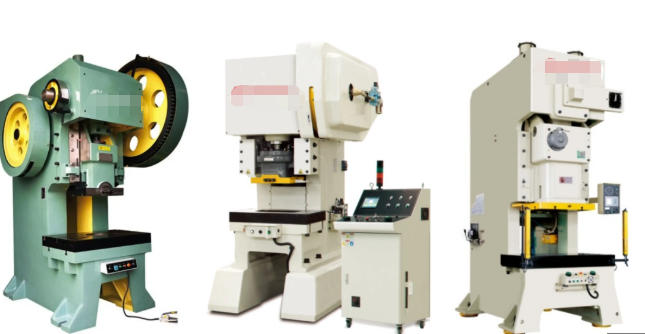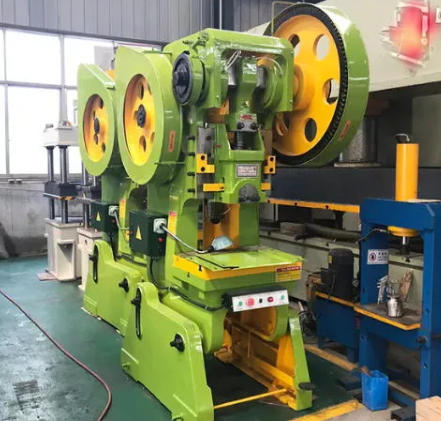Views: 222 Author: Rebecca Publish Time: 2025-11-18 Origin: Site









Content Menu
● The Importance of Punch Press Machines in Tableware Manufacturing
● Key Types of Punch Press Machines for Tableware
● Leading Punch Press Manufacturers for Tableware Industry
● Technological Advances Enhancing Punch Press Machines
● Applications in Tableware Manufacturing
● Technical Specifications Relevant to Tableware Punch Presses
● Production Workflow in Tableware Factories
● Benefits of Using Modern Punch Press Machines
● FAQ
>> 1. What types of materials can punch press machines handle for tableware production?
>> 2. How do CNC punch presses improve flexibility in kitchenware manufacturing?
>> 3. What maintenance is required to keep punch press machines running smoothly?
>> 4. How do punch press machines support both mass production and customized orders?
>> 5. What safety features are common in modern punch press machines?
In the tableware manufacturing industry, producing high-quality kitchenware such as cutlery, cookware lids, and serving trays requires precision, speed, and efficiency. Punch press machines have emerged as essential tools in this sector, transforming thin metal sheets into complex shapes through punching, blanking, embossing, and forming operations. These machines not only improve productivity but also ensure consistent part quality and reduced waste. This article offers a comprehensive overview of the top manufacturers of punch press machines designed specifically for the tableware industry, examining their technology, product applications, and industry impact.

Punch press machines enable the rapid, precise shaping of metal sheets used in kitchenware production. With capabilities reaching speeds of up to 600–900 strokes per minute, these machines offer high-volume output while maintaining tight tolerances. They are adaptable to a range of metals like stainless steel, aluminum, and other alloys common in tableware manufacturing. The integration of CNC and servo-driven technologies has enhanced their flexibility, allowing manufacturers to quickly switch between product designs and maintain minimal scrap rates, crucial for cutting costs and improving sustainability.
Several varieties of punch press machines meet the specific needs of tableware manufacturers:
- Mechanical Punch Press: Uses a flywheel and mechanical linkages to deliver consistent, rapid strokes. Ideal for high-volume blanking and shallow forming tasks in cutlery production.
- Hydraulic Punch Press: Provides controlled, gradual force, suitable for deep-drawing thicker materials like pot lids, heavy trays, and cookware bodies.
- CNC Turret Punch Press: Features multiple interchangeable tools controlled by computer, allowing fast design changes and complex shape processing for diverse product batches.
- Servo-Electric Punch Press: Combines electric servo motors for energy-efficient, high-precision operations, perfect for flexible and detailed manufacturing tasks.
1. Accurl specializes in mechanical and CNC punch presses that deliver both high speed and accuracy. Their machines are widely used for producing consistent cutlery blanks and cookware components.
2. Chin Fong offers hydraulic and servo-driven punch presses capable of deep-drawing and high-tonnage operations, suitable for forming complex kitchenware elements like deep pots and lids.
3. PRIMA POWER manufactures CNC turret punch presses with state-of-the-art tool automation and adaptive controls, supporting rapid tooling changes and precision embossing used in premium tableware products.
4. Youngmax provides robust four-column hydraulic punch presses designed for heavy-duty, deep-drawing jobs. Their equipment supports advanced kitchenware shapes and multi-hole processing.
5. Peddinghaus presents CNC plate punching machines with features like triple tool punch presses, carbide scribing, roller feed measurement, and innovative side unloading systems, enhancing material utilization and production flow.

Punch press machines today incorporate smart manufacturing technologies such as real-time machine monitoring, predictive maintenance, and Industry 4.0 integration, which improves uptime and quality control. Automated feeding, robotic part unloading, and in-line finishing reduce labor hours while increasing operational safety. Advanced control software enables optimized tool pathing and nesting software that maximizes raw material use, decreasing scrap and reducing costs while allowing quick adaptation to new product designs or batch sizes.
Punch press machines are the backbone of many operations in the kitchenware industry, including:
- Cutlery Production: Quickly forming spoon, fork, and knife blanks with precision edges.
- Cookware Components: Deep drawing of pot bodies, lids, and trays with consistent thickness and smooth finishes.
- Decorative Embossing: Adding logos and patterns through embossing or piercing.
- Specialty Kitchen Tools: Creating holes, slots, and bends for utensils like peelers and graters.
Key machine parameters relevant to tableware use include:
- Tonnage: Most press machines for this industry range from 20 to 300 tons of force to handle thin to moderately thick metals.
- Stroke Speed and Length: Stroke speeds reach 600–900 strokes/min; stroke length can be adjusted according to part depth needs.
- Tool Stations: CNC machines have multiple tool stations, usually 2–6, to allow quick switching between operation types.
- Material Thickness Capacity: Many machines process metals ranging from 0.2mm up to 5mm or thicker for cookware parts.
- Control System: Advanced CNC or servo-electric controllers with user-friendly interfaces optimize precision and adaptability.
- Additional Features: Material feeding measurement systems, carbide scribers for layout marking, and automated unloading conveyors improve efficiency.
Typical workflow involves automated sheet feeding followed by precise punch forming performed by the press. The system ejects formed parts onto conveyors that transport them to finishing stations where deburring, polishing, and quality inspections occur. Integration of robotic handling in these areas enhances speed and reduces human error, leading to higher throughput and consistent product standards.
- Increased production speed without compromising quality.
- Greater material utilization minimizing scrap wastage.
- Enhanced precision for complex and decorative components.
- Flexibility to handle custom orders or design changes quickly.
- Reduced labor and operational costs through automation.
- Safety improvements with better machine controls and automated processes.
Punch press machines are indispensable assets in the tableware industry, enabling manufacturers to achieve high productivity, precision, and cost efficiency in producing diverse kitchenware products. Leading companies like Accurl, Chin Fong, PRIMA POWER, Youngmax, and Peddinghaus have developed advanced machines that integrate the latest technology to meet evolving market demands. As smart manufacturing continues to progress, these machines will become even more adaptable, efficient, and essential for competitive tableware production worldwide.

These machines can process metals like stainless steel, aluminum, copper, and specific alloys. They accommodate a wide range of thicknesses suitable for various cutlery and cookware components.
CNC punch presses allow for customizable tool configurations and programmable operations, enabling rapid switching between designs and efficient handling of small to medium batch sizes.
Regular lubrication, tool inspections and replacements, calibration of control systems, and cleaning of feeding and unloading mechanisms ensure reliability and minimize downtime.
Mechanical and hydraulic presses excel in large-scale consistent production, while CNC and servo-electric presses provide the flexibility needed for customized, small-batch or intricate designs.
Modern machines include emergency stop buttons, safety guards, light curtains, and automatic shutoffs to protect operators and maintain secure production environments.
Why The Right Punch Press Machine Is Crucial for High-Quality Tableware Production?
Punch Press Machines: The Backbone of Efficient Cutlery Production
How To Choose Between Manual And Automatic Punch Press Machines?
Best Punch Press Machines for Small And Large-Scale Manufacturers
Top Manufacturers of Punch Press Machines for The Tableware Industry
What Are The Key Benefits of Investing in A Punch Press Machine for Your Factory?
How Punch Press Machines Are Revolutionizing The Cutlery Industry?
The Role of Punch Press Machines in Modern Kitchenware Production Lines
Punch Press Machine Vs. Turret Punch Press: What's The Difference?
